Welcome to Part 3 in my continuing series of cemeteries that have personal importance and significance to me. I hope you are enjoying this series of posts. If you have missed posts, you can find them in the My Blog section of the website.

First on the list for this post is Aveluy Wood (Lancashire Dump) Cemetery. This cemetery is near to the village of Authuille and the River Ancre in the Somme department and was begun in June 1916 in the Lancashire Dump, a few days before the beginning of the Battle of the Somme. The cemetery was then used as a burial ground all the way up to the German withdrawal to the Hindenburg Line defensive positions in February 1917. Further burials were added during the German Spring Offensive in 1918. After the end of the First World War, the cemetery was further added to when isolated graves were brought in from the surrounding areas. The cemetery now contains 380 burials of which 172 are unidentified. Within the grounds of the cemetery, there are special memorials to 20 casualties who are known to be buried somewhere in the cemetery itself. For me, the main reason that I like this cemetery is its setting. Surrounded by trees on three sides, this cemetery feels very tranquil and peaceful. I have only had the opportunity to visit this cemetery once, but its setting and location made an impression on me. I remember seeing rabbits hopping around the cemetery (obviously not knowing what the cemetery was!) and thinking to myself that I was seeing the continuation of life and nature in action.
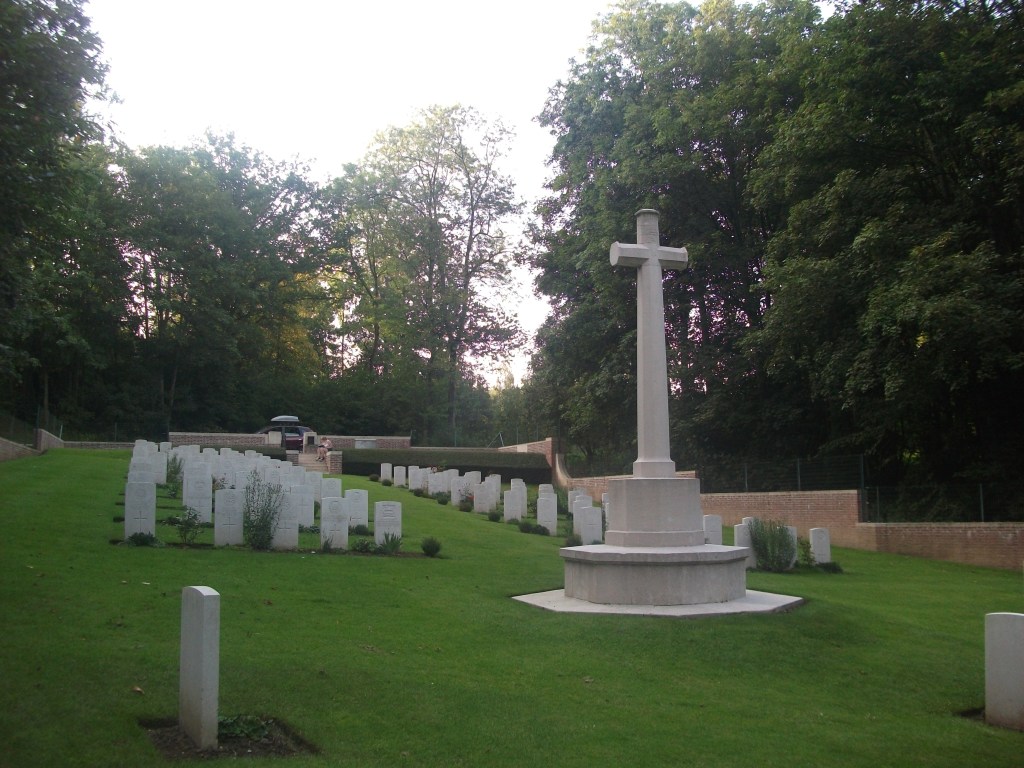
Second in the blog post is Quéant Road Cemetery near to the village of Buissy, approximately 12 miles from the of Cambrai. This cemetery was created quite late on in the First World War, being used by medical services in October and November 1918 and containing only 71 burials (now Plot I, Rows A and B). However, it became a concentration cemetery after the end of the First World War when 2200 burials were brought into the cemetery from across the 1917-1918 battlefields between Arras and Bapaume. Today, there are 2377 Commonwealth burials in the cemetery, of which 1441 are unidentified but there are also special memorials to 56 men known or believed to be buried somewhere in the cemetery. There are also additional memorials to 26 casualties buried in German cemeteries nearby that could not be found after the war was over. Before November 2018 I had no prior knowledge of this cemetery. In fact, I didn’t know much about the area at all, my historical knowledge being limited to what happened during the Battle of Cambrai, and even then, that wasn’t a great deal. This cemetery came into my sphere of knowledge when doing some research. My family (mom, dad and youngest sister) invited me to join them on a trip to France for the anniversary of Armistice Day – 11th November 2018. I knew that going somewhere like Ypres or the Somme would be out of the question, so I decided to research burials from 11th November 1918 that we could go and commemorate ourselves at 11 o clock. Whilst carrying out this research, I found out that there was to be a reburial of two identified Australian soldiers on the 12th November. When I told my family of this, we knew we had to go. We arrived at the cemetery and parked some way away. It was evident that it was going to be a well-attended ceremony. The soldiers being reburied were Lance Corporal James Leonard Rolls and Private Hedley Roy Macbeth, who both buried on 3rd May 1917, when a shell landed on the dugout they were in and entombed them. It was a beautiful ceremony, with hymns, prayers and eulogies from the family members of both men. Everyone who was present was invited to place some soil into the plot, of which I took the opportunity to do so. This was the first reburial (and so far only) that I have been able to attend and it will have a firm place in my memory for a very long time.
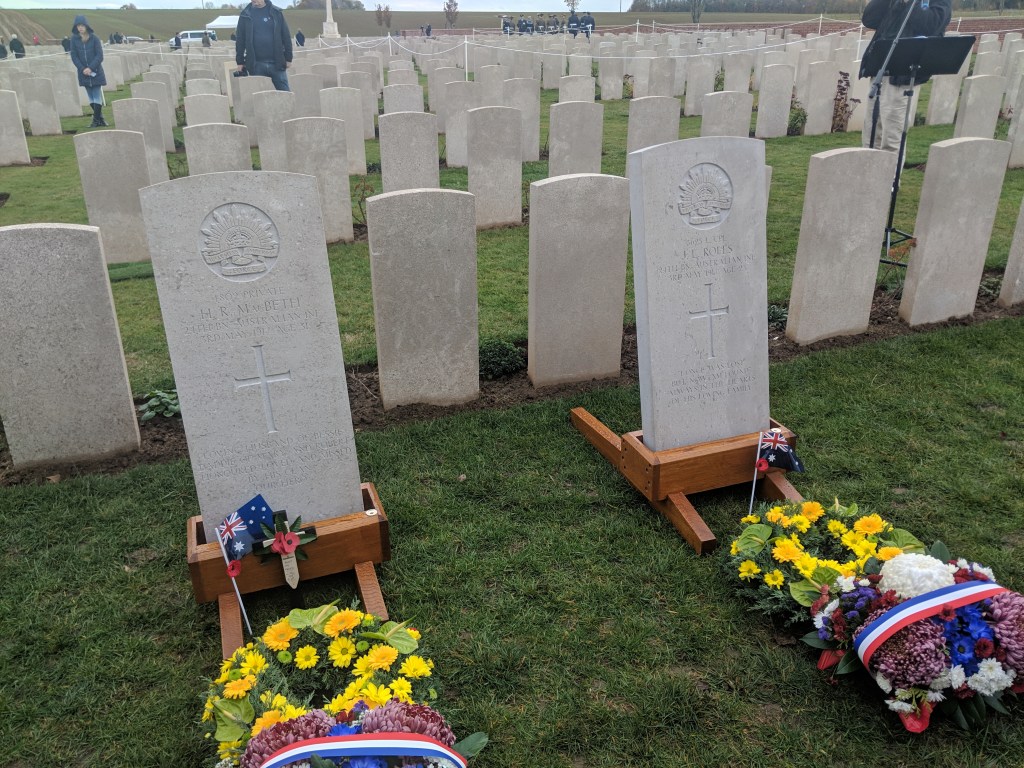
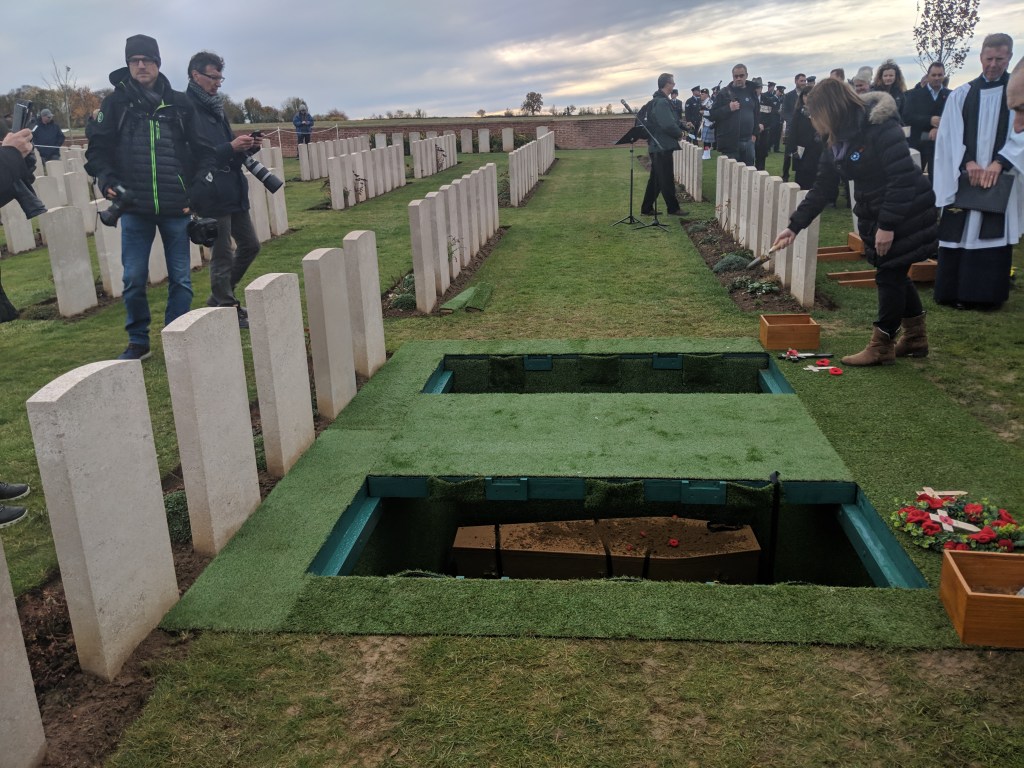
The last cemetery for this blog post is quite a well-known one but no less important to me because of that; Prowse Point Cemetery in Ploegsteert, very close to the French/Belgian border. This cemetery is unique, as it is named after an individual who was involved in fighting in the area. The name is a dedication to Major Charles Prowse who was in command of the 1st Battalion Somerset Light Infantry in October 1914. Prowse’s leadership in the action the unit was involved was of such note, that the location was christened Prowse Point on future trench maps. Subsequent units in the area started a cemetery in the area and gave it the same name. Promoted to Brigadier General, Prowse was killed on the first day of the Battle of the Somme. The cemetery was created by the 2nd Royal Dublin Fusiliers and the 1st Royal Warwickshire Regiment and was used for almost the whole duration of the First World War, from November 1914 to April 1918. The cemetery contains 231 Commonwealth burials of the First World War, of which 4 are unidentified. The cemetery is also located near to the site of the Christmas Truce of 1914 (a story for another post!)
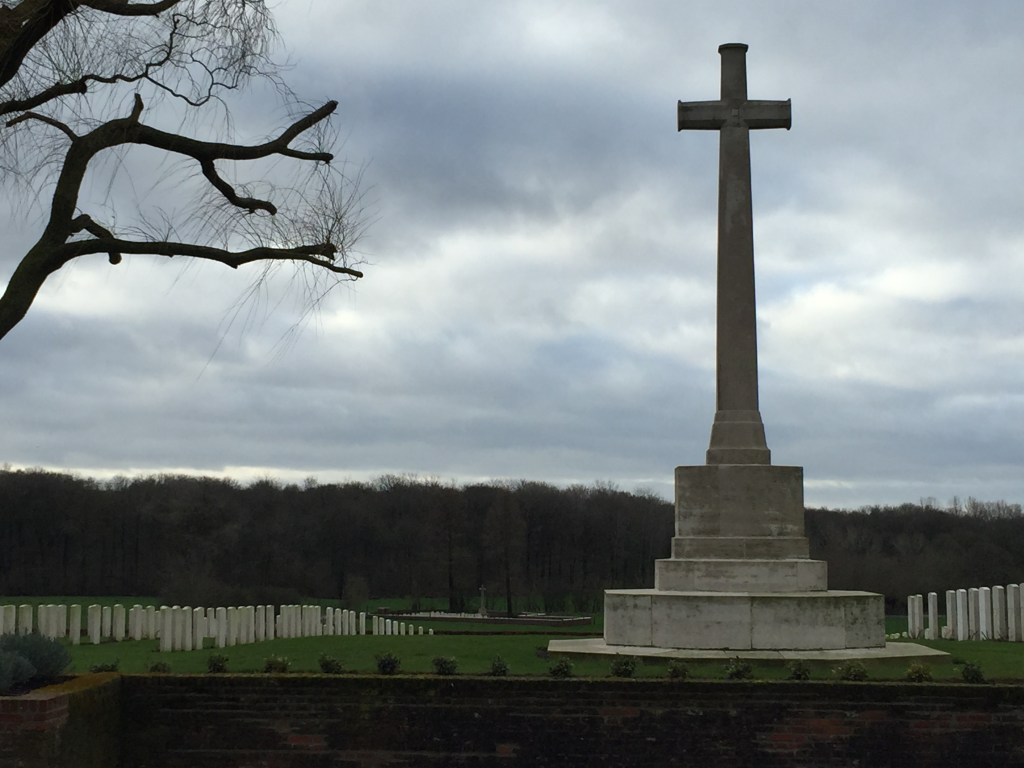
One of the reasons why I am fond of this cemetery is that I find the setting of this cemetery to be quite spectacular. To the south, you look down in Ploegsteert Wood, the scene of heavy fighting throughout the war. To the south-east, you can just about see the Ploegsteert Memorial to the Missing for that area around the Belgian/French border. To the west, you look out over the battlefields and to the north, you look towards Mesen (or Messines) and the Ridge on which it sits. It really is quite a picturesque setting. The second reason why I particularly like this cemetery is the wide range of burials that are located here. As noted above, the cemetery was started by the Warwicks and the Dublin Fusiliers. The Warwicks are a local regiment to myself and there are burials in Prowse Point from areas and streets that I know very well. There are also burials from almost every nation that fought in the First World War. There’s British, Australian, Canadian, New Zealand and German burials, really showing the breadth of involvement in the war. There are even three Maori soldiers buried in this cemetery as well. Anyone who has read my blog will know, I have a particular soft spot for New Zealand.
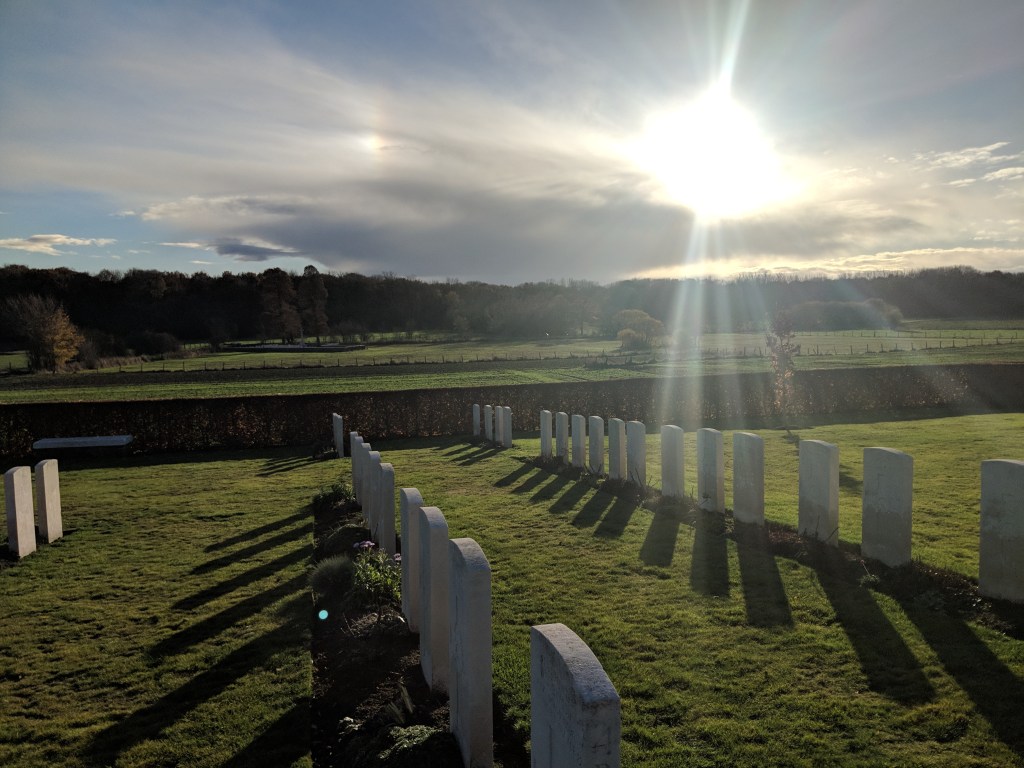
I hope you are enjoying the blog so far. If you have anything you’d like to share, please either comment on the blog or send me a message through the contact page.
‘Til next time!
Beth

Another really interesting blog, Beth. I have a particular soft spot for Aveluy Wood as I believe that it is the resting place of my Great Uncle Robert ‘Bobby’ Durham. If you ever feel the inclination, you can read about him in the blog I posted on here on the centenary of his death in April 2018. I agree, it’s a particularly peaceful cemetery, but one I felt a real ‘atmosphere’ in, probably because of the links to my great uncle, but also because the woods directly opposite gave me such a sense of foreboding. That whole stretch of the D50 road is very atmospheric, I think.
I loved your section on Prowse Point, too. That’s one I intend to visit the next time I cross over to Flanders.
Great stuff!
LikeLiked by 1 person